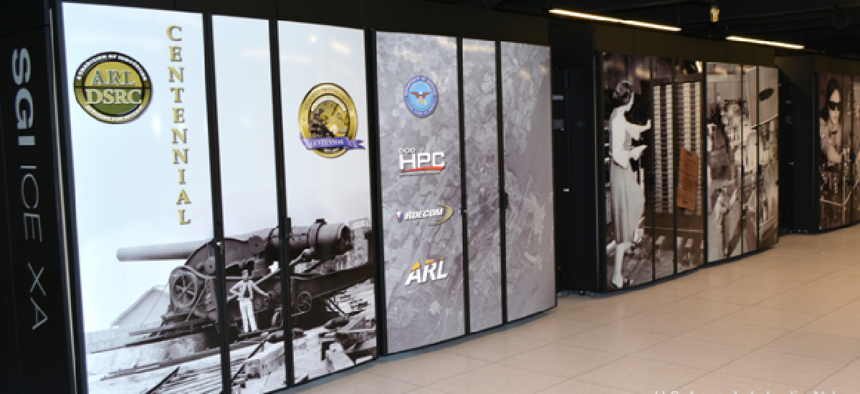Army taps super powers for vehicle armor

The Army Research Lab has used its high-performance computing systems to design protection for vehicles on the battlefield.
Researchers at the Army Research Laboratory have two new supercomputers -- Hellfire and Centennial -- to help run the complex simulations and computations supporting more than 60 Army programs.
The SGI ICE XA machines are part of the TI-16 technology insertion for the High Performance Computing Modernization Program. They contain Intel Xeon "Broadwell" processors and NVIDIA Tesla K40 general-purpose graphics processing units, and will add a total of 2.8 petaflops of computing capacity.
The Centennial system augments the center's Excalibur supercomputer and extends the total unclassified high performance computing capability to nearly 6.3 petaflops, according to ARL.
"Supercomputing provides a technological advantage for DOD projects," said Raju Namburu, director of the ARL DOD Supercomputing Resource Center. "It helps to reduce costs by reducing reliance on expensive and destructive live experiments and prototype demonstrations.”
Using supercomputers, researchers can analyze vehicle animations that can be rotated, taken back and forward in time, manipulated and improved in a “fraction of the time it would take to conduct a series of physical experiments," he said.
When U.S. soldiers were suffering an average of 27 fatalities each month from IED attacks in Iraq, the Army’s Underbody Blast Research Program used high-performance computing to design and rapidly deploy vehicular armor upgrade kits to mitigate the threat to Humvees.
"The Army ground vehicle fleet was equipped with armor reinforcements in less than four months by leveraging the center's resources," said David Lyon, chief of the Protection Division for the laboratory's Weapons and Materials Research Directorate. "High performance computing resources and expertise enabled a 20 percent reduction in fatalities and resulted in three to four times faster deployment rate for the kits."
Researchers working on vehicle protection face a variety of challenging ballistic scenarios where there¹s no single armor solution. Robert Doney, a computational physicist with ARL's Weapons and Materials Research Directorate, said they must consider many potential materials and strategies.
"To improve on an armor design, we need to know how it performs when struck by any of the many anti-armor threats," Doney said. The Army supercomputers allow Doney and his colleagues to run hundreds to thousands of armor simulations per year that use several hundred million hours of CPU time.
Although the DOD High-Performance Computing Modernization Program typically invests in supercomputing upgrades at the facility every two years, officials project demand and capacity for the Army's supercomputers to increase dramatically.
"There is an insatiable need for high-performance computing and advanced networking infrastructure by the DOD [Research Development Test and Evaluation] community," Lyon said.






